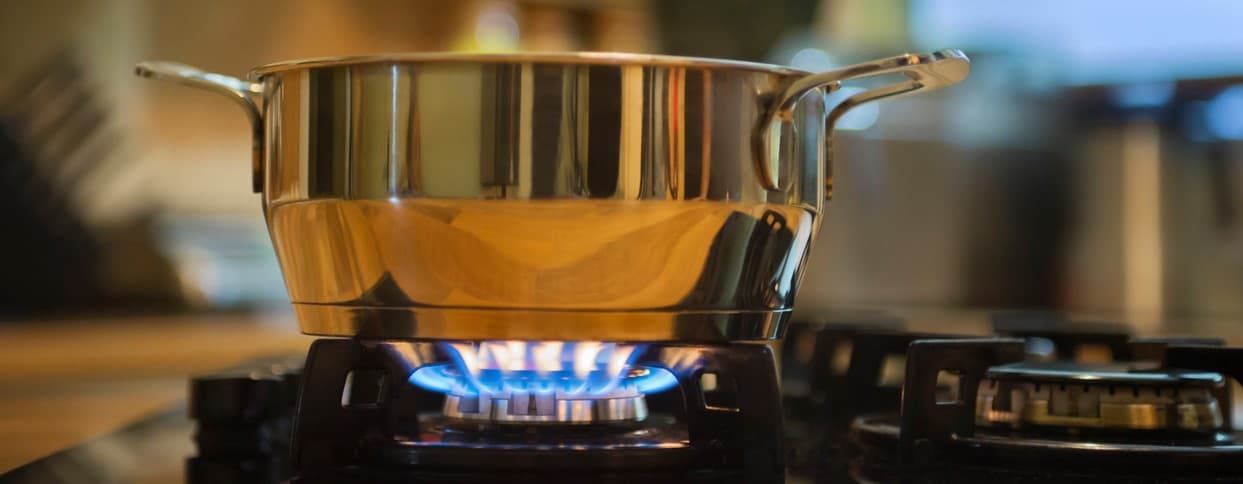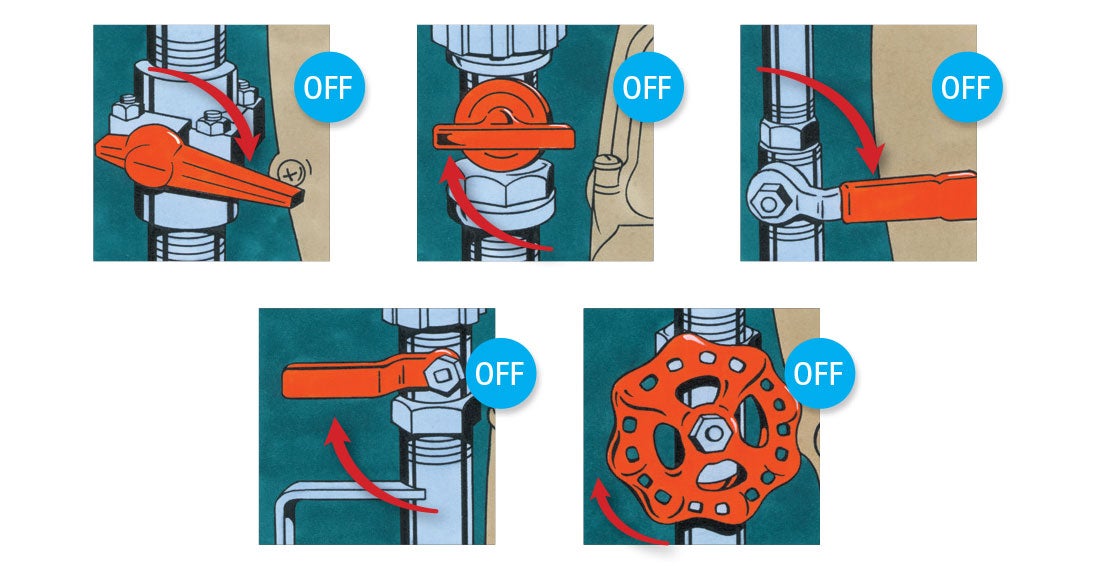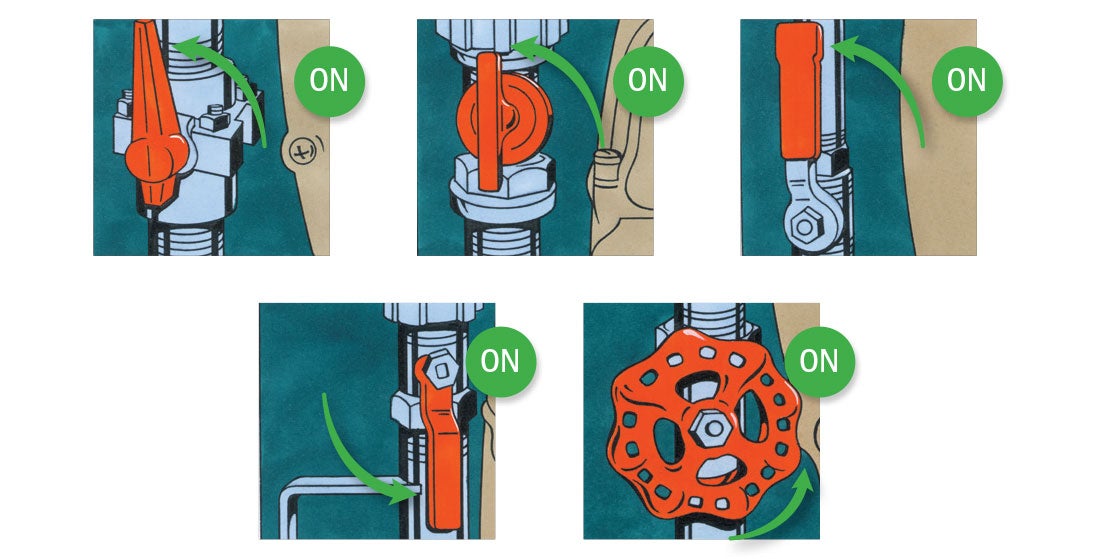Natural gas is a colourless, odourless fossil fuel consisting of a mixture of gases, mainly methane. It's lighter than air, it isn't poisonous and, at the right concentration in air [usually 5-15%], it can be ignited.
Gas safety tips

Natural gas and liquefied petroleum gas [LP gas] can offer a range of advantages when it comes to heating. But, like all fuels, they must be treated with care. Both of these gases are given an artificial odour to make them easy to detect in case of a leak.
Natural gas
LP gas
LP gas is produced during the oil refining process or extracted during the natural gas process. It consists mainly of propane and a small quantity of butane. It's heavier than air, it isn't poisonous and, at the right concentration in air [usually 2.5-10%], it can be ignited.
Gas leaks
Here's what you should do if you smell gas: Avoid flames and sparks - don't light matches or cigarettes. Don't use electrical switches, appliances or mobile phones. Never light a gas appliance if you detect gas odour. Turn off all gas appliances, making sure the pilot light [a small flame that lights the main burner] has gone out. Open all windows and doors to disperse the gas. If you use LP gas, you should take extra care to ventilate confined spaces, basements and other low-lying locations where pockets of gas may collect before attempting to re-light your gas appliances.
This is important because unlike natural gas, which is lighter than air, LP gas is heavier than air and requires more ventilation. If you still smell gas or you think gas is escaping even after all appliances have been turned off, you should switch off the main gas supply tap and immediately call the Faults and Emergency Line for your local Gas Distributor.
If the property owner is responsible for the damage to the gas main or service, they may incur the repair costs.
How to turn OFF the main gas supply tap:
Important: First, you should turn off all appliance controls and pilot lights. Then, turn the main gas supply tap to the OFF position.
The main gas supply tap is located near the gas meter, usually in the meter box.

The diagrams on this page show the OFF positions for various types of gas taps. If you have a gate valve, turn the wheel clockwise to close the valve.

How to turn ON the main gas supply tap: Check that all appliance controls and pilot lights are turned off. Return the main gas supply tap to the ON position [see diagrams above]. If you have a gate valve, turn the wheel anti-clockwise to open the valve.
Once turned back on, re-light pilot lights, following the manufacturer's written instructions.
If you would like to learn more about gas safety, there is plenty of helpful safety information and tips for gas safety on the South Australian government website.
Being safe from day to day
Licensed Installers Under the Plumbers, Gas Fitters and Electricians Act 1995, all work done on gas appliances, or any form of gas installation must be undertaken by a licensed gas-fitter. You can check your gas-fitter is licensed on the Consumer and Business Services Licence Search website.
Certified Gas Appliances All gas appliances must be certified. Buying appliances that have been safety tested and certified for use in Australia, and regularly maintaining them, reduces the risk of safety incidents occurring in your home. If any damage is caused to your property by a non-certified gas appliance, your insurance company might not cover you.
There are two essential components that must be present to prove that a gas appliance has been certified for sale in Australia: a data plate and a certification label.
You can compare the certification number on the compliance plate or sticker of your appliance to ensure the appliance is certified as safe for use in Australia against the online database at GTRC Database. A list of approved labels/certifying bodies can be found on the South Australian Government website under Buying safe gas appliances.
Working Near Gas Pipes It’s easy to damage a below-ground gas pipe or fitting when working in your yard or around your home. Before You Dig Australia is available by dialling 1100, or you can visit their website Before You Dig Australia (BYDA). They will help you determine the exact location of any gas infrastructure. You should call this number at least 24 hours before excavating to obtain advice and assistance.
Keeping Gas Appliances Working Safely Like anything you use regularly, it’s important to take care of your gas appliances. Regular maintenance and servicing will help ensure safety, and improve performance and reliability. It is generally recommended that gas appliances are serviced regularly by a qualified service person, such as a licensed gas fitter. You should always refer to the owner’s manual of your individual appliances for the manufacturer’s recommended service frequency and guidelines around correct operation.
Your responsibilities
As the owner, you are responsible for the gas installation at your property, including any associated costs, and should use a licensed gas-fitter to carry out any gas work required. Your gas-fitter will be responsible for carrying out work at your gas meter outlet up to (and including):
- The gas appliance/infrastructure
- The pipe work from the gas meter to the appliance
- Any flues or ducts
Additional Contacts
Ongoing Monitoring
Under the Gas Regulation 2012 - Part 8A - Regulation of NERL Retailers; Clause 3(a)(ii), Alinta Energy is required to establish and maintain systems for measuring the use of such information systems by customers. Alinta Energy uses Web analytics to monitor the access and download of this document and related pages, so as to ensure the relevance and appropriateness of this information. Alinta Energy welcomes feedback from anyone reading this document as to how this information might be improved or made more accessible. Please use the feedback tab to the right of the screen to provide feedback.
